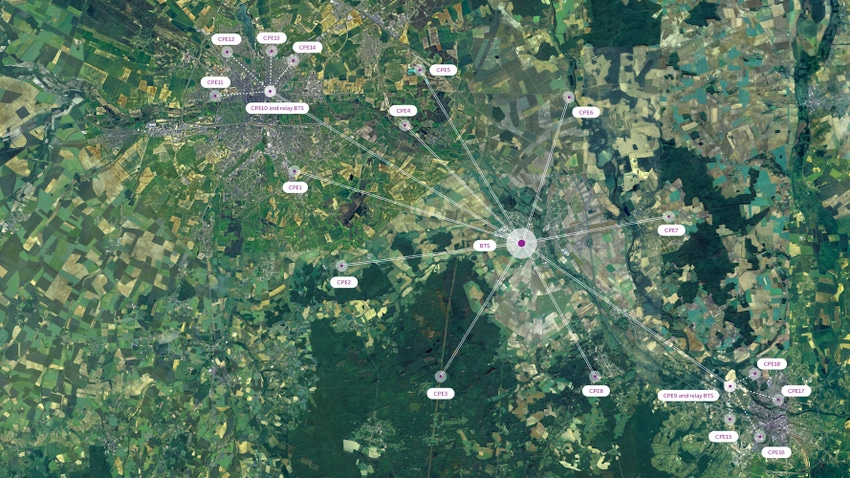With all of the complexity and potential for planning difficulties, what are the key considerations for 5G FWA that mobile planners and engineers need to take into account as they prepare for this new service?
September 26, 2022

Telecoms.com periodically invites expert third parties to share their views on the industry’s most pressing issues. In this piece Nishita Hathi, Product Director at TEOCO, explores some of the things operators need to consider when deploying Fixed Wireless Access.
The most significant entrant to the connectivity landscape in recent years has been 5G for home service, otherwise known as Fixed Wireless Access (FWA). The rise of this latest rival to traditional broadband internet comes with a great deal of expectation, particularly as FWA in conjunction with 5G offers a scalable, cost efficient high-speed broadband technology with a wireless connection that provides the last mile. It is a market that is also anticipated to grow exponentially over the next five years: FWA connections are set to rise threefold providing broadband to over 800 million people by 2027, and reach US $88.5 billion, with a compound annual growth rate of 99.3%.
The rising demand for high-speed internet connectivity with lower latency has accelerated this new era of 5G FWA market expansion. In fact, 5G FWA is seen as the answer to the greatly anticipated, as yet unsatisfied, demand for high-performance broadband in regions where service is still lacking—specifically rural or newly built suburban areas.
Part of the appeal of 5G FWA is down to the fact that it presents a lower-cost alternative to fibre to the home (FTTh) and delivers comparable speeds. In contrast to the costly and time-consuming process of digging trenches and installing fibre across various locations, FWA uses radio waves to create a connection between existing cell towers and antennas located on or in customer’s homes or businesses.
With such high revenue expectations for 5G FWA, mobile operators are rapidly seeking ways to capitalize on this new opportunity. From a network planning perspective however, FWA is a marked departure from what mobile operators are typically used to and getting it right first time will be vital to ensure a good customer experience. There are therefore a number of new dimensions to take into account when planning FWA networks, including 5G customer premise equipment, new spectrum challenges, and customer KPIs. These add certain complications to the typical cellular planning scenarios. With all of the complexity and potential for planning difficulties, what are the key considerations for 5G FWA that mobile planners and engineers need to take into account as they prepare for this new service?
New Heights
In a traditional mobile network, it’s generally taken as fact that all devices are located approximately one to two meters above ground for the majority of the time. As a result, mobile signals have been optimized for various domains and spaces – for example, a person’s car, desk, kitchen counter, pocket and so on. With mobile operators now planning services for an indoor experience, this could also extend to connecting an assortment of ‘fixed’ devices located in high-rise apartments and office buildings. In these types of settings, it is essential to employ propagation models that account for various heights. When it comes to considering ‘what if’ types of scenarios, mobile operators will benefit from running their simulations in 3D to account for various heights.
New hardware
Until recently, mobile operators have not had to account for fixed terminals. The introduction of 5G FWA changes this. Now there are rooftop antennas, antennas on building facades and indoor fixed terminals (or Customer Premises Equipment (CPEs)) routers to account for. Planning tools need to be able to determine how many FWA CPE terminals are required per location and where to place them.
New spectrum
5G FWA offers operators several spectrum options. Mid-band is typically the spectrum of choice today, but millimeter can also be used, and it is especially useful in an urban context. At the same time however, its idiosyncratic nature makes it slightly more challenging to work with. Operators need to know how service is impacted depending on which spectrum band is used. For instance, if the operator opted to use another frequency, they would have to understand in advance what that would look like, and how various CPEs would perform with different frequencies.
New KPIs
Mobile operators delivering high-speed fixed broadband will need to meet certain performance KPIs. It’s essential to be able to analyze and view these on a map to help predict the user experience as part of the planning process. Planning engineers are required to know certain facts in advance: whether they have a strong enough or sufficient signal strength and signal quality; whether they have sufficient throughput; whether they analyze these KPIs by location and per CPE. Only with this certainty can operators be sure they can deliver on their promises.
New customers
Fundamentally, the main draw of 5G FWA from an operator’s perspective is the potential to add a significant number of new subscribers, and as a result, greatly increase revenues. As interest grows amongst prospective customers and they begin to reach out and explore their options, customer care agents will need to be able to answer questions about coverage and serviceability which will require them to have access to accurate, real-time information.
The arrival of 5G FWA brings numerous advantages, but also places mobile operators in unknown territory from a planning perspective. To help them navigate this environment they need the right support. The primary concern involves CPE modelling and reporting. This then becomes the substrate on which optimal 5G FWA networks can be designed. The right tools are also helpful for addressing the technology hurdles commonly associated with FWA planning processes, including 5G outdoor and indoor fixed terminal placement. Simultaneously, such tools are also key to unlocking advanced coverage and traffic analysis, combined multi-technology planning, site selection, and ‘what-if’ scenarios.
FWA is undoubtedly a disruptive technology that will drive revenues and business growth in the years to come – to guarantee its success, operators will have to play close attention to the planning and optimization.
 Nishita leads the Product Management of TEOCO’s market leading network planning suite, ASSET. Nishita has over 16 years of experience in creating and delivering software solutions for network operators to efficiently design and optimize their mobile networks. Nishita is passionate about bringing innovative solutions to market in order to support the evolving needs of the network operator. Nishita has held several product management roles in the mobile communications sector including Teoco, Viavi Solutions, Fujitsu and AIRCOM.
Nishita leads the Product Management of TEOCO’s market leading network planning suite, ASSET. Nishita has over 16 years of experience in creating and delivering software solutions for network operators to efficiently design and optimize their mobile networks. Nishita is passionate about bringing innovative solutions to market in order to support the evolving needs of the network operator. Nishita has held several product management roles in the mobile communications sector including Teoco, Viavi Solutions, Fujitsu and AIRCOM.
Read more about:
DiscussionAbout the Author(s)
You May Also Like








.png?width=300&auto=webp&quality=80&disable=upscale)


_1.jpg?width=300&auto=webp&quality=80&disable=upscale)


.png?width=800&auto=webp&quality=80&disable=upscale)